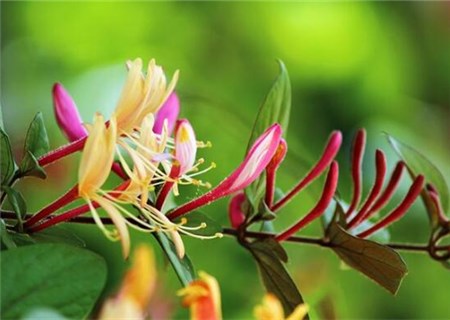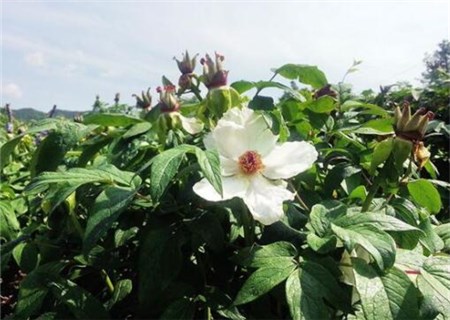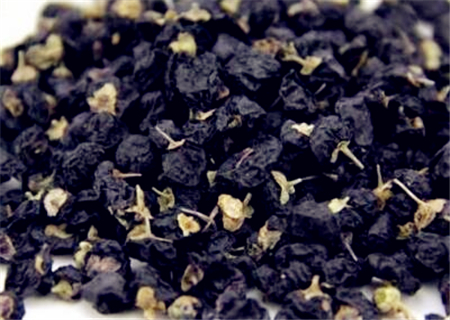Can fresh honeysuckle drink in water? How do you breed? Why not blossom?
Honeysuckle, also known as honeysuckle, blossoms white at first, then turns yellow, so it is named honeysuckle. Honeysuckle has been known as a good medicine for heat-clearing and detoxification since ancient times. People like to use it to make tea. So do you know that fresh honeysuckle can drink in water? How do you breed? Why not blossom?

Can fresh honeysuckle drink in water
Directly soaking water to drink is unscientific, there are many germs on the flowers, you can use stir-frying or drying, you can choose good branches to drink, the length is controlled at about 3 centimeters is better; the shape of the tea is very good, all in an upright state.
The most important thing is that, as the honeysuckle you drink, you should pay attention to collecting honeysuckle that has not yet opened, and you should pick it when the dew is dry in the early morning, and the time to pick flowers must be controlled at 10: 00 am in the morning, and the content of extract in the rest of the time is not high. And timely drying or shade drying, so that the efficacy is good.
Second, how to reproduce honeysuckle
Honeysuckle is mainly propagated by cuttage, and it can also be propagated by seed, root division and striping.
Cuttage propagation
It is divided into two methods: direct cutting and cutting seedling raising.
Cutting period: can be carried out in spring, summer and autumn. It should be before the germination of new buds in spring and from early September to mid-October in autumn.
Selection and treatment of cuttings:
It is appropriate to select 1-2-year-old strong, full branches, cut off about 30 cm cuttings, each with at least 3 nodes. Then, the lower leaves were removed and the upper 2-4 leaves were left. The lower end was cut into a smooth slope and tied into a small bundle every 50. The lower slope was quickly dipped in 500ppm indolebutyric acid (1ba) solution for 5 minutes for 10 seconds, and then cut immediately after slightly drying.
1. Direct cutting
On the whole planting ground, dig holes according to the row spacing of 150 × 150 cm or 170 × 170 cm, 40 cm in diameter and depth, and loosen the bottom soil. 5 kg of rotten stable compost or compost is applied to each hole. Then, spread the cuttings evenly, insert 3 to 5 in each hole, insert the depth of the cuttings into the soil at the depth of 1, 2, 2 and 3 of the cuttings, then fill the fine soil with your feet and water it once to keep the soil moist. It can take root and sprout in about 1 month.
2. Cuttage seedling
On the flat rake bed, draw the line according to the line spacing of 15 cm and 5 cm, and drill the guide hole on the border surface with small wooden sticks or bamboo chopsticks every 3 cm to 5 cm. Then, insert the cutter 1 / 2 / 2 / 3 into the hole obliquely, press it tightly, and then water it once. If cutting at low temperature in early spring, the plastic film arch grid should be built on the cutting bed to keep warm and moisturizing. It can take root and sprout in about half a month, and then remove the plastic film for seedling management. Those planted in spring are planted in the garden in the winter of the same year or in the spring of the second year. The seedlings raised by cutting in summer and autumn were transplanted in the following spring. Cutting seedlings can obtain a large number of nutritious seedlings in a short time.
3. Seed propagation
Before and after Frosts Descent, when the honeysuckle berries turn black, collect the ripe fruit in time, rub it in water, bleach off the peel and impurities, remove the full seeds sunk to the bottom, and dry them for storage. It can also be broadcast on demand. If sowing in spring the following year, take out the seeds 40 days before sowing, soak them in 40 ℃ warm water for 24 hours, remove and 3 times the wet sand layer to accelerate germination, when 50% of the seeds are white, the seeds can be screened for strip sowing.
4. Ramet propagation
The mother plant was dug during the dormant period of Flos Lonicerae in winter, and the root system and aboveground stem were properly trimmed, and 2 plants were planted in each hole, and the buds could appear in the second year after planting. However, the growth of the mother plant was inhibited, and there were few flowers in that year, even could not blossom, so it was seldom used in the producing areas except for the use of wild excellent varieties to separate roots.
5. Striping propagation
It was carried out during the dormant period of plants in autumn and winter or before germination in early spring. The 3 ~ 4-year-old honeysuckle with flowering, strong growth and high yield was selected as the mother plant. The 1-year-old branch near the ground is bent and buried in the soil, cut it in the part of the branch, cover it with 10-15 cm fine fertile soil, and then fix it with the branch to make the tip of the branch exposed to the ground. If the branch is longer, it can be bent continuously and pressed into the soil. Under the pressure of rear service watering and fertilization, the rooted striped seedlings can be cut off from the mother in the spring of the second year and planted separately.
Why doesn't honeysuckle blossom
The growth of honeysuckle needs plenty of sunlight, the light must be guaranteed, and the ventilation of the environment will also affect the flowering.
The soil needed for the growth of honeysuckle must ensure the nutrition of the soil. Phosphate fertilizer is indispensable.
During the growing period of honeysuckle, pruning should also be done well. Pruning and pruning of unhealthy branches and buds will also affect flowering.
The powdery mildew of honeysuckle will cause the leaves of honeysuckle to produce white dots, which will then expand, affecting flowering or withering if it is already in bloom.
Failure to do the above will affect the flowering of honeysuckle.
Time: 2019-03-17 Click:
- Prev

What are the planting methods of oil peony? How to manage in the field? What are their uses?
Oil peony refers to the variety type of peony with high seed yield, high oil content and high effective components. Peony belongs to Paeoniaceae, Paeoniae and Paeoniae, which has a wide range of uses and good economic benefits. So do you know what are the planting methods of oil peony? How to manage in the field? What is the use of it?
- Next

When is the best month for black wolfberry to be planted? How many years has it been planted? How many jin can you produce per mu? Where is the best product?
Black Chinese wolfberry is black fruit Chinese wolfberry, black fruit Chinese wolfberry is named Qionuoying Halmag, Tibetan medicine name Pangma, belongs to the genus Lycium barbarum of Solanaceae. So when is the best month to grow black wolfberry? How many years has it been planted? How many jin can you produce per mu? Where is the best product? Where is black Chinese wolfberry suitable for planting? The origin of wild black wolfberry is in Qinghai.
Related
- Fuxing push coffee new agricultural production and marketing class: lack of small-scale processing plants
- Jujube rice field leisure farm deep ploughing Yilan for five years to create a space for organic food and play
- Nongyu Farm-A trial of organic papaya for brave women with advanced technology
- Four points for attention in the prevention and control of diseases and insect pests of edible fungi
- How to add nutrient solution to Edible Fungi
- Is there any good way to control edible fungus mites?
- Open Inoculation Technology of Edible Fungi
- Is there any clever way to use fertilizer for edible fungus in winter?
- What agents are used to kill the pathogens of edible fungi in the mushroom shed?
- Rapid drying of Edible Fungi

